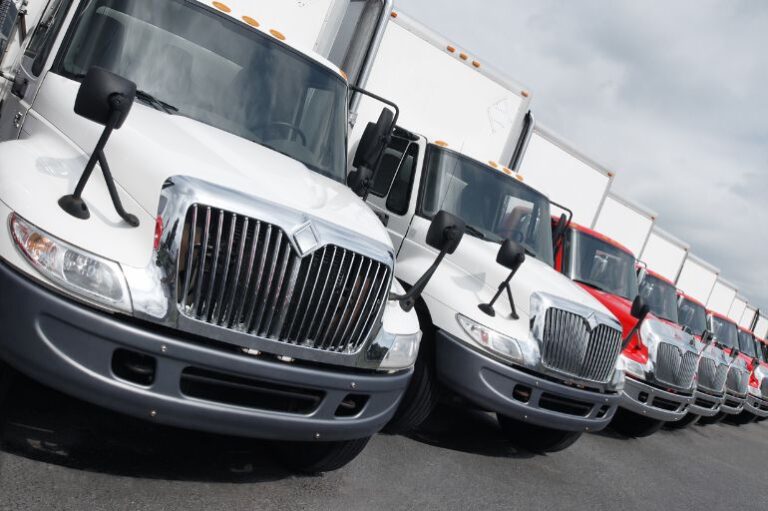Element Fleet Management’s 2025 Market Pulse Report provides a comprehensive view of current fleet trends in the United States and Canada. Based on survey responses from fleet operators and business leaders, the report outlines key priorities, pressures, and strategies shaping the industry in the year ahead. While there is cautious optimism about future growth, the overwhelming sentiment is a focus on operational stability and cost control.
Market Conditions and Outlook
Fleet operators report that Original Equipment Manufacturer (OEM) production is improving, but remains below pre-pandemic levels. Seventy percent of respondents observed some progress, though full normalisation is yet to be achieved. When asked about fleet expansion plans, 43 percent plan to maintain their current fleet size, and another 43 percent are preparing to add units slowly. Only 6 percent are planning rapid fleet growth.
A significant shift is underway as organisations move away from longer-term electrification strategies in favour of financial stability. In 2024, 41 percent of respondents prioritised decarbonisation and sustainability. In 2025, that figure has dropped to just 20 percent.
Fleet Priorities in 2025
The top concerns for fleet managers reflect economic uncertainty and a desire to reduce exposure to inflationary pressures. The leading priorities are:
- Ordering and replacing vehicles – 73 percent
- Cost savings and reducing total cost of ownership – 61 percent
- Minimising vehicle downtime – 31 percent
- Driver safety – 53 percent
Preventive maintenance and data-driven decision-making have become more important, especially as fleet replacement cycles are extended to preserve capital. Element Fleet Management notes that organisations are focusing on leveraging real-time data to avoid unscheduled and costly repairs.
Economic Pressures and Budget Responses
The financial strain caused by inflation is reshaping fleet strategies. Only 14 percent of organisations plan to increase budgets in response to rising costs. Instead, most are pursuing cost-reduction measures. These include:
- Lowering total cost of ownership – 61 percent
- Reducing maintenance costs – 51 percent
- Leveraging technology to reduce operational costs – 37 percent
There is also growing interest in vehicle rightsizing and the use of lower-cost alternatives based on job requirements. Asset-sharing programs and fuel-efficiency initiatives are also being explored, though to a lesser extent.
Driver Safety and Technology Adoption
While 80 percent of fleet operators report that they have set safety goals, there is a gap in the use of driver safety technology. Just over half (51 percent) currently use such systems, and 31 percent have no plans to adopt them in the next year. Driver behaviour remains a significant concern, with nearly half of respondents citing it as a key contributor to accidents and fines.
Element’s advisors note that safety technology is a proven way to reduce long-term risk and cost, but adoption has been inconsistent.
Telematics and Connected Vehicle Solutions
Telematics adoption continues to grow. Fifty-eight percent of fleets are already using a connected vehicle solution, and another 18 percent plan to adopt one within the year.
The most common objectives for telematics programs include:
- Improved asset management – 65 percent
- Improved driver safety – 62 percent
- Fuel efficiency and reduced idling – 30 percent
- Visibility into negligent driver behaviour – 30 percent
- Forecasting maintenance requirements – 30 percent
Fleet managers see connected technology as a critical enabler of safer and more efficient operations, particularly as they aim to control costs while maintaining service quality.
Strategic Challenges in 2025
The biggest challenges identified in the report are directly related to managing driver behaviour:
- Policy non-compliance – 57 percent
- Excess fuel consumption from poor driving – 47 percent
- Reckless or dangerous driving – 43 percent
These issues are more commonly reported by larger fleets, particularly those with between 500 and 2,000 vehicles. The report suggests that as fleets grow in size, the difficulty of enforcing policy compliance and safe driving increases.
Decarbonisation and the Role of Hybrid Vehicles
Despite a drop in decarbonisation being listed as a top priority, there is still growing interest in hybrid vehicles. Among organisations that do not yet have an electrification strategy, 60 percent said they are interested in adding hybrids or alternative fuel vehicles to their fleet.
The main barriers to battery electric vehicle adoption remain:
- High upfront costs and complexity of charging infrastructure
- Uncertainty about electric vehicle reliability
- Concerns around battery life and availability of suitable models
Hybrid vehicles are emerging as a practical alternative, especially as more OEMs expand their hybrid offerings.
Remarketing Trends and Resale Conditions
Used vehicle prices have stabilised following the post-pandemic boom, reducing short-term profitability but bringing more predictability to remarketing strategies. Fleet operators are beginning to cycle out stored or underutilised assets, leading to increased used vehicle sales volumes. Improved OEM production is also contributing to more stable pricing in the resale market.
How Fleet Leaders Make Decisions
Fleet operators continue to rely on professional advice rather than online content when making strategic decisions. Seventy-six percent consult directly with vendors, and 61 percent participate in discussions through professional associations. Only 18 percent use online forums, and just 14 percent rely on social media for fleet-related decision-making.
Conclusion
The 2025 North American fleet market is defined by a recalibration of priorities. Fleet managers are focusing on maintaining operational stability, managing rising costs, and adopting scalable technologies. While sustainability goals have not disappeared, they are being approached more pragmatically, with hybrids gaining favour over full electrification.
For Fleet Managers in Australia, the insights from this report reflect similar themes seen locally—namely, the need to manage costs, extend replacement cycles, and ensure operational efficiency during a period of economic uncertainty. It also suggests that the transition to low-emission vehicles will likely happen in stages, with hybrid technology serving as a bridge while infrastructure and policy catch up.






